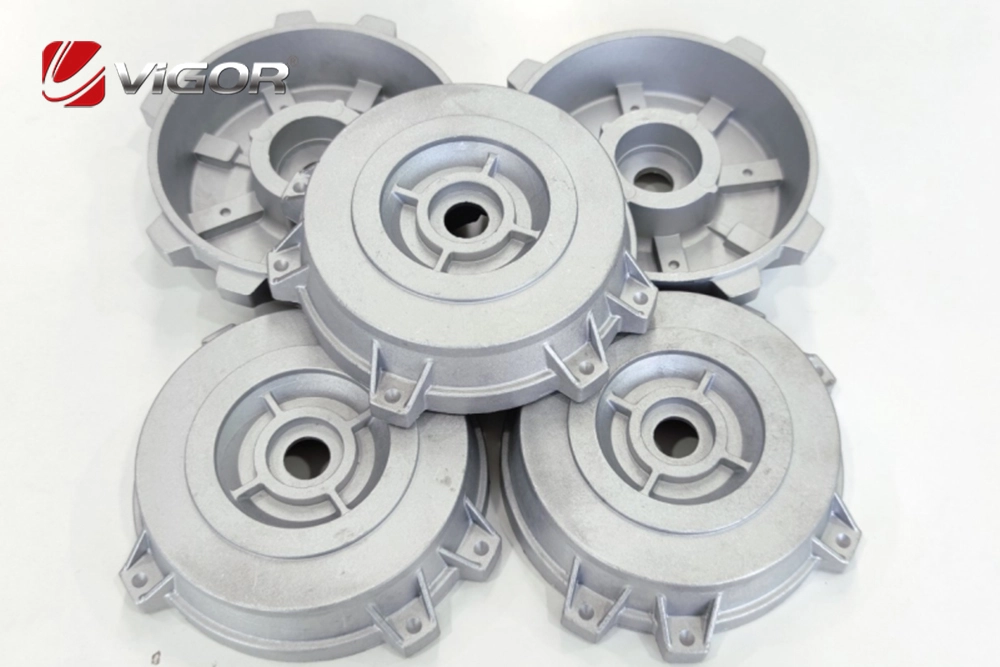
Knowledge
Die-casting Materials and Application
Commonly used die-casting materials

The commonly used materials in die-casting processes mainly include non-ferrous metals such as aluminum, zinc, magnesium, and copper, as well as their alloys. These materials hold significant importance in the die-casting field due to their unique physical and chemical properties.
Aluminum alloys: Aluminum alloys are currently the most widely used die-casting materials, accounting for approximately 60% to 80% of all die-cast parts. Aluminum alloys feature low density, high strength, excellent electrical and thermal conductivity, and superior corrosion resistance. They are commonly used in the manufacturing of automotive parts, electronic device casings, mechanical equipment components, etc. Aluminum alloys have excellent die-casting properties, good fluidity, and can produce thin-walled and complex-shaped castings.
Zinc alloys: Zinc alloys have good casting and mechanical properties and are widely used in hardware, toys, locks, automotive parts, etc. Zinc alloys have a low melting point, are easy to die-cast, and have relatively low costs.
Magnesium alloys: Magnesium alloys are one of the lightest die-casting materials, featuring a good strength-to-weight ratio and excellent machinability. Magnesium alloy die-castings are often used in aerospace, automotive, electronic, and portable device industries.
Copper alloys: Copper alloys, due to their high electrical and thermal conductivity, are mainly used in connectors and heat sinks in the electronic and electrical industries. Copper alloy die-castings are also used in the manufacturing of some special mechanical parts and decorative items.
Application fields of die-cast parts
Die-cast parts, due to their high precision, high surface quality and excellent mechanical properties, are widely used in multiple industries and fields.
Automotive industry: The automotive industry is the largest application field of die-cast parts, accounting for approximately 70% of the total demand for die-cast parts. The applications of die-cast parts in automobiles include engine components, transmission components, body structure parts, and chassis components. With the trend of automotive lightweighting, the use of aluminum alloy and magnesium alloy die-cast parts in automotive manufacturing is increasing.
Electronic and communication equipment: The electronic and communication equipment field is the second largest application field of die-cast parts, accounting for about 10% of the total demand for die-cast parts. Die-cast parts are used to manufacture the shells and internal structural components of devices such as mobile phones, computers, and servers, as well as heat sinks for communication base stations.
Household appliances: The household appliance field is also an important application field of die-cast parts, including the shells and internal structural components of appliances such as washing machines, refrigerators, and air conditioners.
Aerospace: The demand for die-cast parts in the aerospace field is increasing, especially in the manufacturing of lightweight structural components for aircraft and satellites. Aluminum alloy and magnesium alloy, due to their lightweight and high-strength properties, are widely used in the aerospace field.
Mechanical equipment: In the field of mechanical equipment manufacturing, die-cast parts are used to manufacture various mechanical components, such as pumps, valves, and gearboxes.
Other fields: Die-cast parts are also widely used in multiple fields such as medical equipment, toys, sports equipment, and building hardware. With technological advancements and the development of new materials, the application scope of die-cast parts will further expand.
Vigor team have rich experience ondie-castings. If any question or any demands we can help, please feel free to contact us atinfo@castings-forging.com



